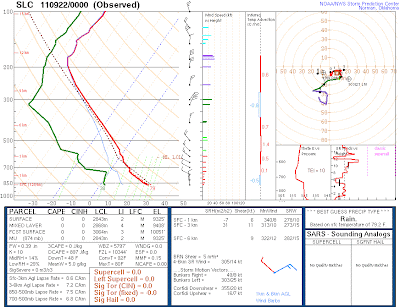Tomorrow marks the first anniversary of the Wasatch Weather Weenies. I'd like to thank all of you out there in the blogosphere for making the first year a success.
We started as an invited only, password protected blog. I wanted to be able to discuss weather and climate issues without a lot of political baloney (a problem these days when it comes to climate), but I was quickly inundated with requests for access and eventually realized that my fears were unwarranted.
Readership has grown fairly steadily over the past year, with a slight dip during the summer when the U is in recess and interest in snow is admittedly low. In September, we've had an average of about 140 pageviews per day. That's far better than the attendance at my classes!
Despite my innate interest in snow and winter weather, the six most popular posts have nothing to do with snow (what is wrong with you people out there!). The Wasatch Weather Weenies first year top-10 is:
- Tour de France Weather
- Catskill Flooding Continued
- Republican Presidential Candidates and Global Warming
- Utah Legislature to Address Global Warming
- Utah Natural Disasters and Hazards
- Patience Young Jedi Knight
- I Can't Take it Anymore!
- La Nina Ski Realities
- Updating the Norwegian Cyclone Model
- Four Horseman of Yesterday's Weather Apocalypse
The biggest challenge of the blog is finding the right level of technical content. The meteorological background of our readers is quite varied and I've dealt with this by varying the technical level of the posts. Some are written at the senior undergraduate to graduate atmospheric science student level, but others are aimed at a general audience. Such unevenness may not be optimal, but it does help me address my desire to contribute to both the education of my students and the general public.
If you have any suggestions or comments about the blog, please add them here. Feedback greatly appreciated and it helps me keep this thing going!


















































